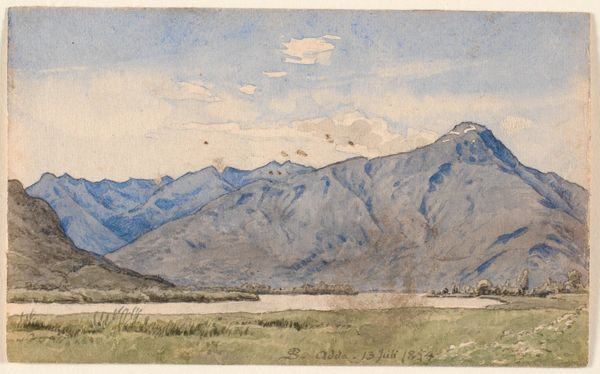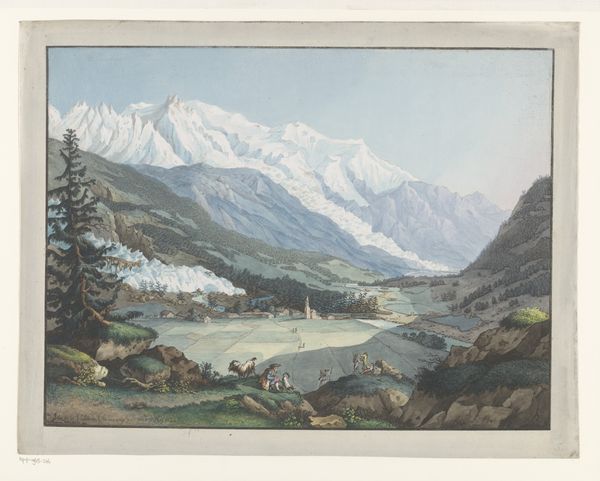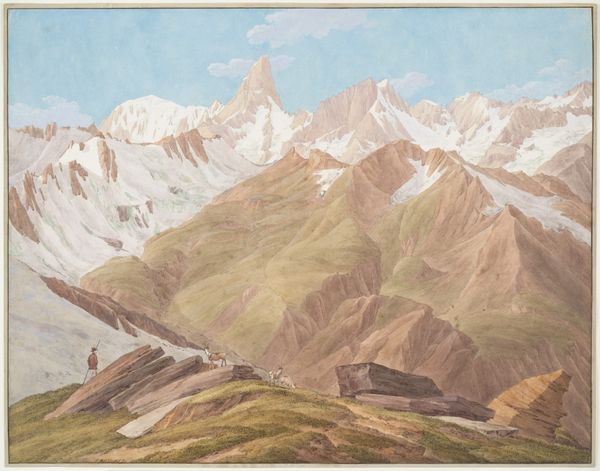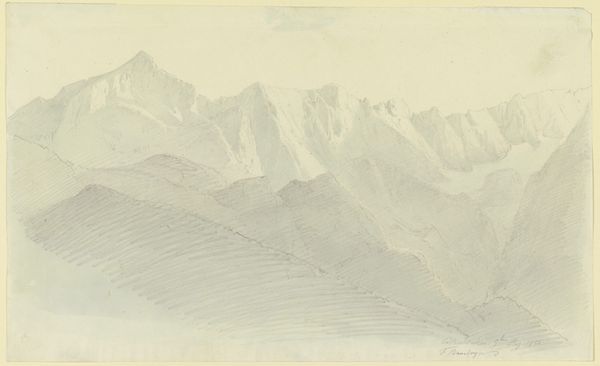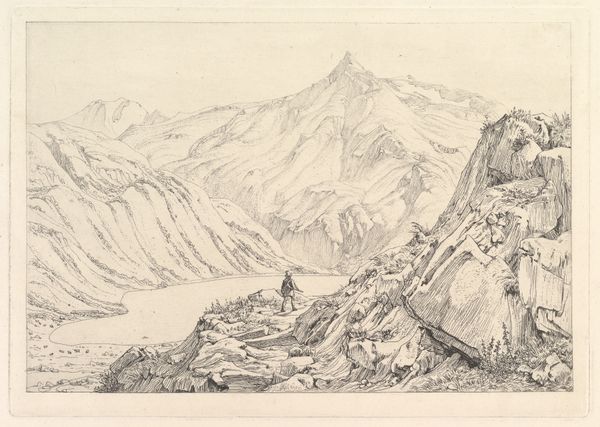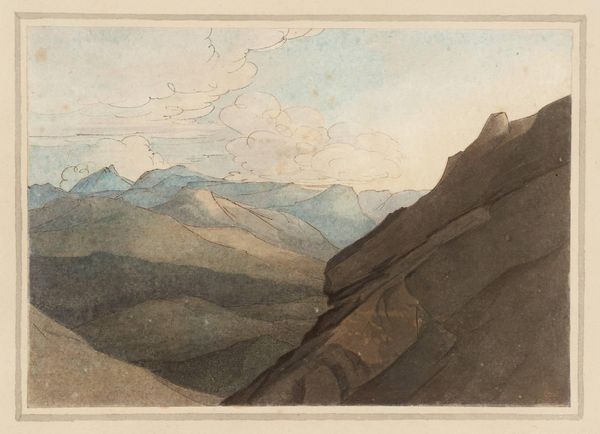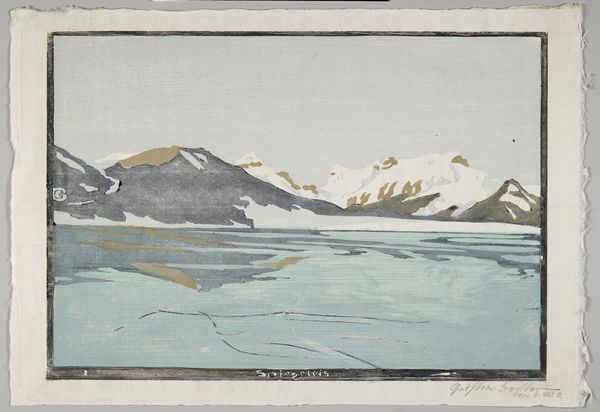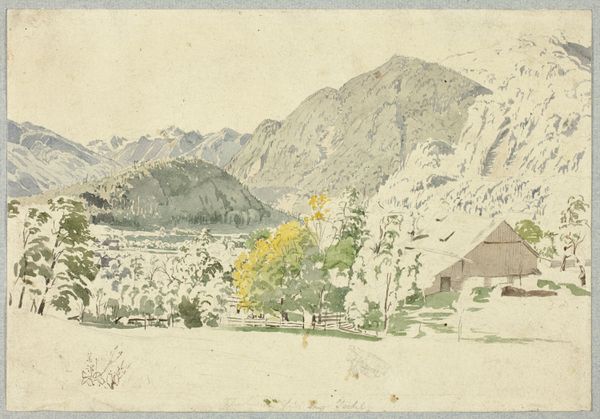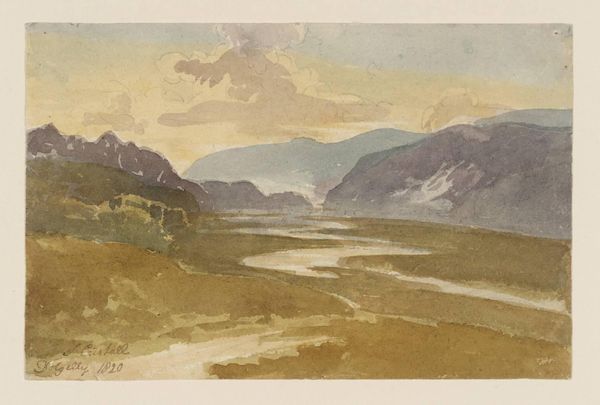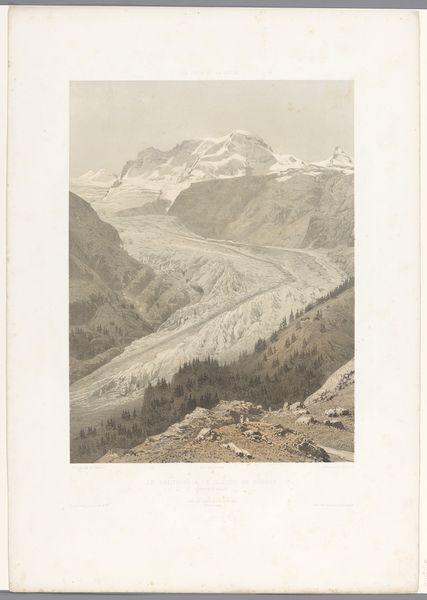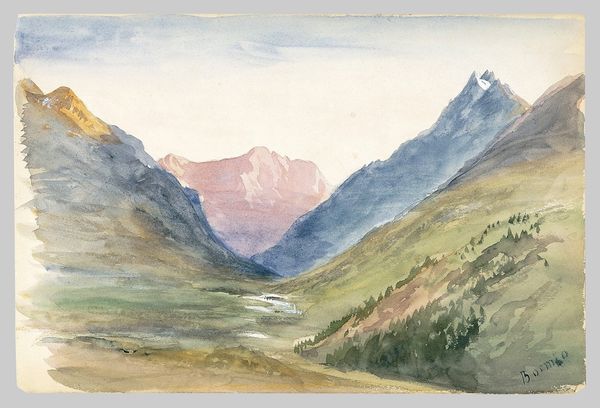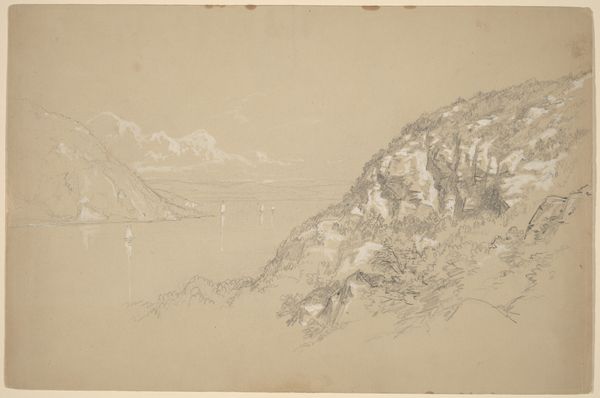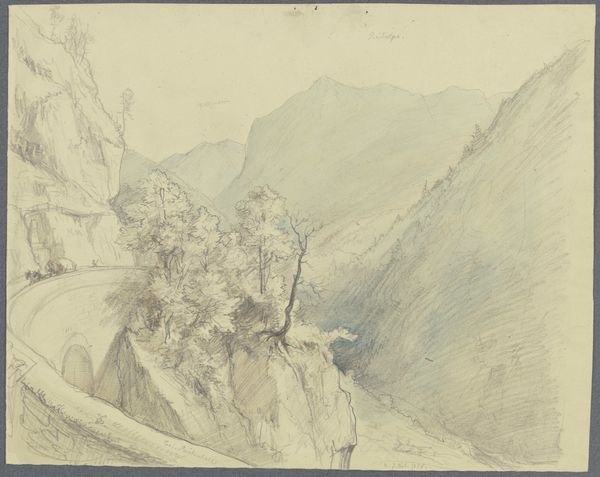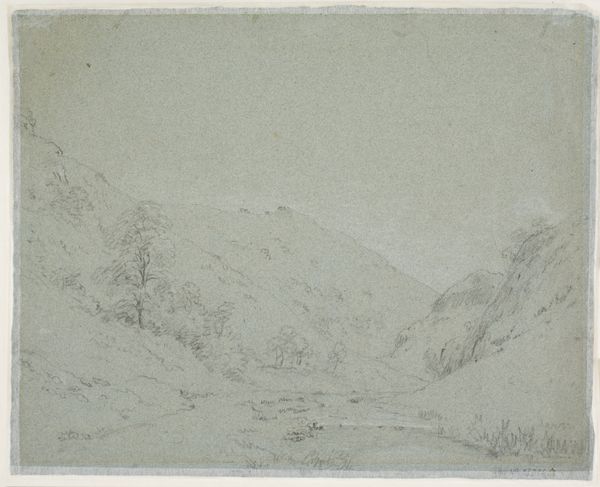
drawing, painting, plein-air, watercolor
#
drawing
#
16_19th-century
#
water colours
#
painting
#
plein-air
#
landscape
#
watercolor
#
romanticism
Copyright: Public Domain
Curator: What a view. The kind that makes you catch your breath, isn’t it? A vast, hazy vista, mountains tumbling into one another, receding into the distance. It feels almost...sepia-toned somehow. Editor: Precisely! You’re looking at "Isar Valley near Mittenwald," a watercolor likely rendered en plein air by Eduard Wilhelm Pose sometime in the 19th century. Now part of the Städel Museum collection. It's interesting how you use "sepia-toned" given that watercolor as a technique often prioritizes those kinds of earthy tones. Curator: Ah, that's plein air for you, breathing in the landscape and exhaling it onto paper! And you’re right about the technique; I almost get a wash effect across the whole work. Do you think he labored to capture detail or prioritized feeling and impression? Editor: Definitely the latter, I believe. Consider the social and political role of art at this time; landscape painting, especially in the Romantic vein, was about cultivating a specific kind of national feeling – awe at nature's grandeur, a sense of belonging to a place... meticulous detail wouldn't necessarily serve that purpose. I think he's more focused on the overall emotional impact. Curator: Right! A perfect scene to inspire, say, a soaring symphony, or maybe a dark gothic poem filled with foreboding… Look how the sunlight catches just the peaks in the distance; a perfect beacon above such vast, complex forms beneath. Do you see something of the sublime here? Editor: Undoubtedly. Romanticism wrestled with these concepts of the sublime, in nature especially. The museum system at this time sought to highlight nationalistic visions and reinforce traditional hierarchies by commissioning or otherwise supporting grand visions that reinforced a specific sociopolitical vision of that cultural entity. Curator: Makes you wonder about what the Isar Valley represents beyond geography, in the collective mind, then and now! Editor: Exactly. This artwork, as with much of 19th century landscape painting, can be analyzed for these subtle manipulations through art and the state's control. Curator: So much packed into a little painting…! Editor: Precisely; art history shows us the broader frameworks we need to appreciate it!
Comments
No comments
Be the first to comment and join the conversation on the ultimate creative platform.
